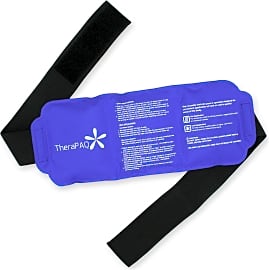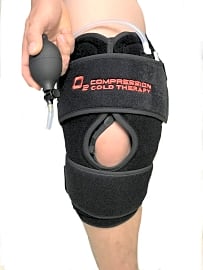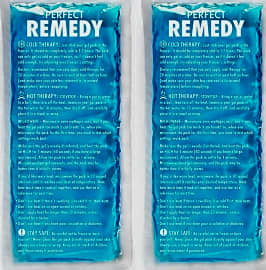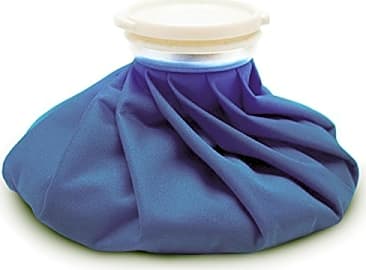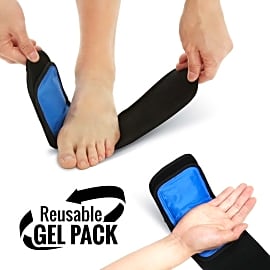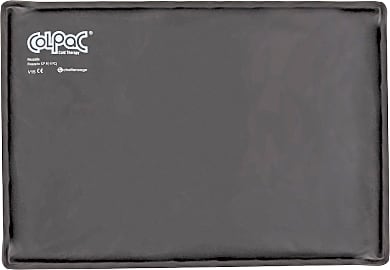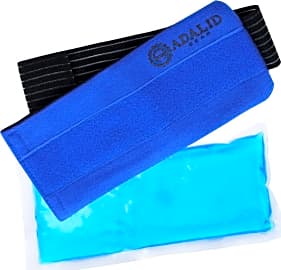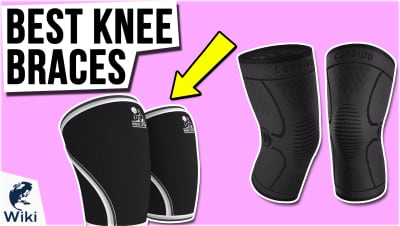The 10 Best Cold Packs

This wiki has been updated 38 times since it was first published in June of 2015. If you're suffering from a work- or sports-related injury, try a medication-free treatment from one of these cold packs. They are not just for soft tissue trauma, either; fevers, migraines, and arthritis pain can all be reduced by carefully icing the affected area, too. Our selections will help get you back on your feet in no time, without causing any added discomfort or possible side effects. When users buy our independently chosen editorial selections, we may earn commissions to help fund the Wiki.
Editor's Notes
March 27, 2020:
Cold packs can offer pain relief or help bring down a fever, but users should be judicious when employing these ice packs. There are both good and not-so-good ways to ice an injury, and you could actually cause damage to the skin if you leave a pack on exposed flesh for too long. For these reasons, if you're thinking of beginning a regimen of icing, you should consider talking to your doctor or physical therapist first.
Because it remains more flexible when frozen than many, we still think the FlexiKold Gel represents a good value. It comes in a range of sizes, making this a great choice for a variety of injuries or body parts. A slightly more budget-friendly alternative is the Perfect Remedy 2-Pack, which gives you two super simple gel packs so that you can rotate them in use. We've removed the Roscoe Reusable, however, over concerns that it both leaks and tends to smell.
As for the popular Chattanooga ColPac, we've opted to keep it, despite the fact that you must be mindful of how you store it. Unlike many, it can become hard and never perform correctly again if you leave it out in the heat. For this reason, even though it's effective, it might not be the best choice for those who are forgetful about putting a pack in the freezer once they've finished with it. And, finally, we removed the Brownmed Polar Ice, as it doesn't cool evenly. If you're looking for a knee brace type, consider instead the O2 Cold Therapy. The compression and cold it offers should provide relief in no time.
Special Honors
AnyPromo Hot/Cold Medical professionals, including chiropractors and physical therapists, who want to ensure that patients remember their names might consider the AnyPromo Hot/Cold, a square reusable pack that can be printed with a name and logo. You'll need to order in bulk, but this just means you'll have plenty on hand to give away. anypromo.com
DonJoy IceMan Clear3 Under the direction of a medical practitioner, the DonJoy IceMan Clear3 can provide consistent therapy thanks to a recirculation system that keeps an attached pad cold. It offers plenty of usability features that make it easy to operate, including a small footprint and a clear construction that lets you see at a glance if it needs refilling. djoglobal.com
Cold Comes To The Rescue
This is why your fingers and toes get colder first in the winter.
You don't have to be a bonafide clutz to get hurt. I never considered myself much of a clumsy person, but I've played ice hockey all my life, so I know a thing or two about being banged up. My sister, on the other hand, is the type of person who falls up the stairs, who walks into a closet door and gives herself a concussion. With these two personalities in my house growing up, you can bet your bottom dollar that we had a nice collection of cold packs.
The basic purpose of applying cold temperatures to an injured area is to reduce swelling and pain. This is a result of restricted blood flow to a cold area of the body.
In cold climates, the affect on your body is distributed throughout its circulatory system. The cold causes an overall constriction of blood vessels in an attempt to keep more blood flowing through to your vital organs. This is why your fingers and toes get colder first in the winter. When you apply cold in a localized fashion, as with these cold packs, your body constricts its blood vessels only in that area, reducing blood flow as well as the buildup of lymphatic fluid.
The cold packs on our list work in a variety of ways. The older style, which is essentially a rubber bag with a screw-top, is the one I used growing up. These work like a charm and they decently keep your ice frozen, though they can be somewhat cumbersome to operate.
The rest of the cold packs on our list need time in the freezer before they can be of any use to you. These will often include some kind of strapping mechanism that allows you to secure it to an injured area, freeing up your hands and giving you more mobility while you heal. Keep in mind, though, that ice is part of a four-stage treatment often initialized as R.I.C.E., or Rest, Ice, Compression, and Elevation. Keeping to this method will heal you the fastest, so even if your cold pack allows for some mobility, it's best to stay still.
Where Does It Hurt?
I have a lot of nostalgia about that old-fashioned cold pack we have on our list. I spent countless hours holding that thing against sprained ankles, twisted knees, hyper-extended elbows, and a banged-up head. Still, for all its efficacy, it really only has one major advantage over the other packs on our list, and that advantage is–in some cases–also its weak point.
The best method, then, if you're going to go with a newer style of cold pack, is to get a pair of them.
This particular style of cold pack requires ice. It's sealed in such a way that the ice you put in it stays cold for a good long while, but if the last of your ice supply went into the cocktails you made that got you drunk and caused you to stub your toe on a cactus planter in the first place, then you don't have a leg to stand on. Or a toe, for that matter.
On the other hand, if you have an ice maker in your freezer, or you keep a bevvy of ice trays frozen on hand, there is nothing more immediate for your relief. The other cold packs on our list all require time spent in the freezer getting cold, and as soon as they warm back up from the combination of ambient temperatures and your body heat, your relief comes to a screeching halt.
The best method, then, if you're going to go with a newer style of cold pack, is to get a pair of them. You keep one in the freezer and one in a closet. If you get hurt, grab the one from the freezer for immediate use, and put the closet pack in the empty place in the ice box. By the time the first one warms up, you'll have another waiting in the wings. If you choose one of the models on our list that can double as a heat pack, you can use the closet model in the microwave and it'll be ready much faster than the one you've got in the freezer.
Now that we've solved that debacle, you can narrow down your selection process to the packs that suit your most common needs. I had a great tendency to sprain my ankles all throughout my youth, so a pack designed for icing down the lower back wouldn't have made much sense for me. Know what ails you, and what you're most likely to bump or twist, and buy your pack accordingly.
Cold For Years
The therapeutic application of extreme temperatures is not a new technique. Like a lot of medical history, one can trace its roots back to ancient Egypt. Discovered in 1862 by renowned Egyptologist Edwin Smith, the Edwin Smith Papyrus is an ancient medical scroll detailing the treatment of numerous bodily injuries.
Like a lot of medical history, one can trace its roots back to ancient Egypt.
The scroll begins with injuries to the head and works its way down, cutting off at around mid-torso. The papyrus was either damaged after that, or was simply left unfinished by its author.
More recently, as the invention of ice boxes allowed us to keep ice and cold goods from the warmth of our environment, ice has been used directly on sites of injury, and as a numbing agent before surgeries and amputations. The advent of electronic refrigeration took the science even further, as doctors and scientists had a much more reliable and consistent source of research materials.
Today, gels and composite beads derived from petroleum have the ability to maintain temperatures for greater amounts of time, creating a whole new market of cold packs designed to stay cold and get you mended.


